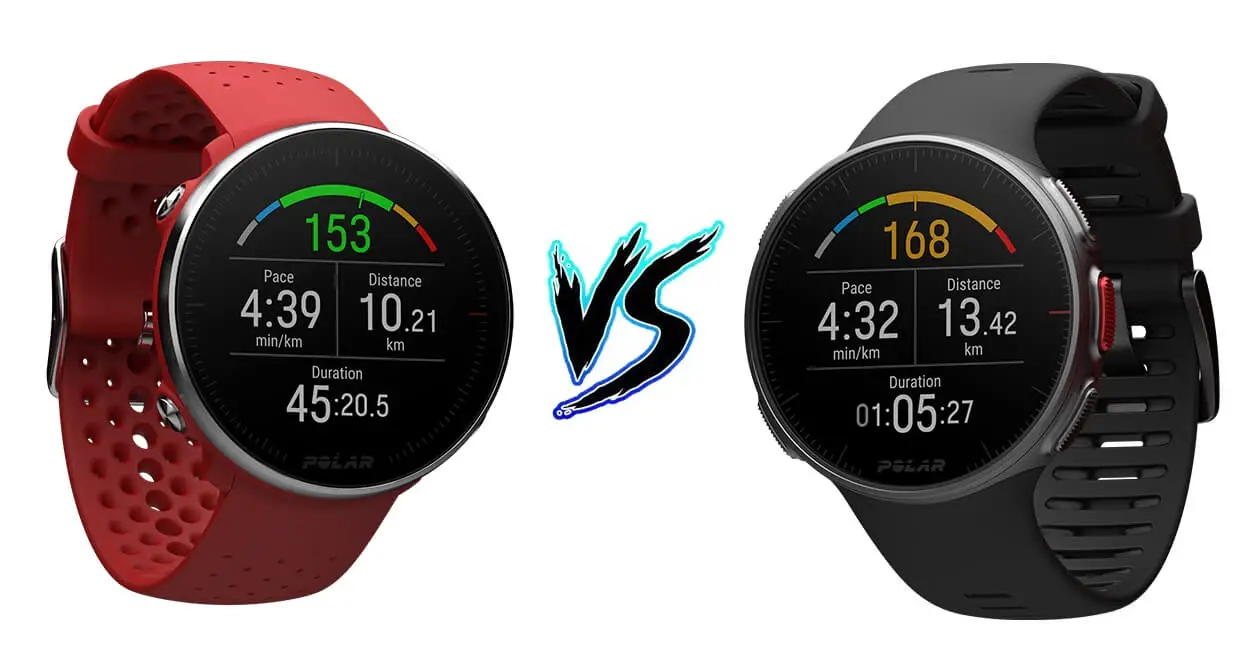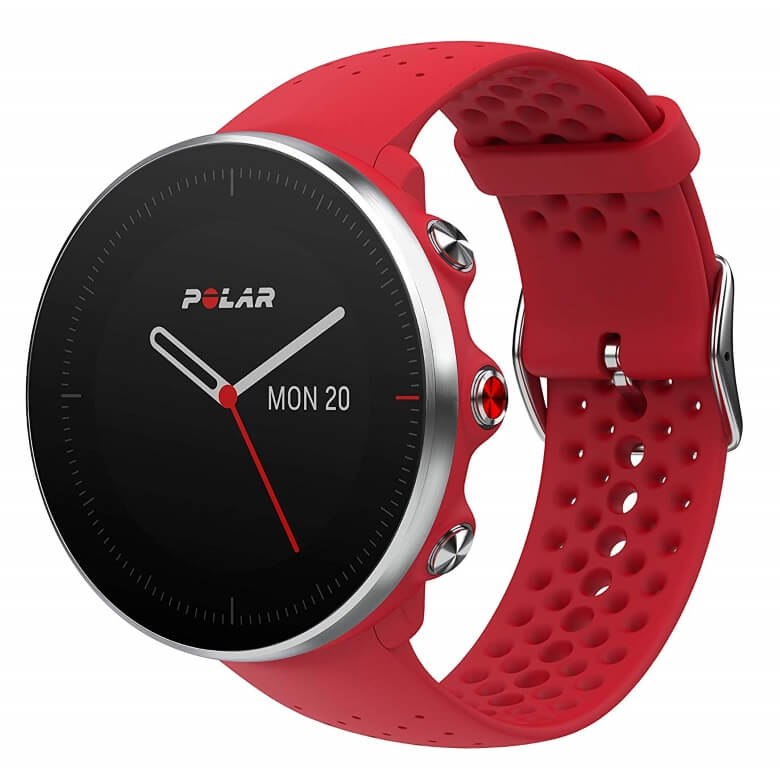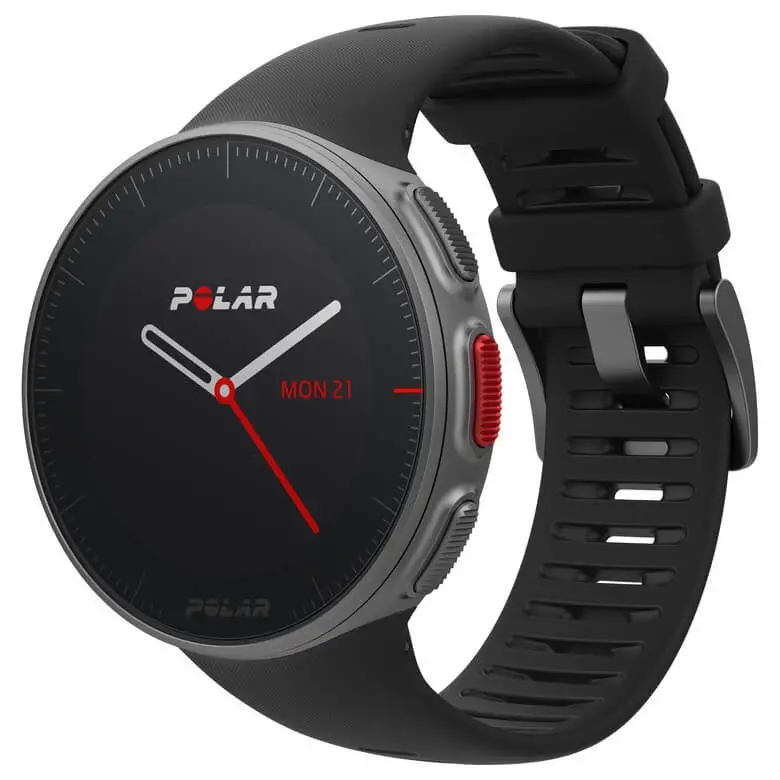The Polar Vantage Series of watches were released to the general public in November 2018, and boy did Polar need something to revive their product offering. Over the past 3 years, Garmin has obliterated Polar’s market share with a broad selection of GPS running watches that are stacked to the nines with features, and significantly more attractive than the average Polar product offering.
But all that changes with the all new Polar Vantage M and Polar Vantage V. These two products are driving the resuscitation of the Polar brand!
If I had to summarize what these watches are about in a single sentence – Very good looking multisport GPS Watches with the best wrist-based heart rate monitors in the world, designed purely for endurance athletes.
4 Key Differences Between the Polar Vantage M vs Polar Vantage V
1 – Polar Vantage V Only – Running Power from the Wrist:
Of all the differences between the two watches, this is the most meaningful. If you don’t know what running power is, fear not. This definition from Runner’s World sums it up quite nicely “Running power, measured in Watts, is a way to measure the output of the work you’re doing when you run. The higher the Watts, the more power you’re generating with every step. The more power your can generate at a lower heart rate or faster pace, the more efficient you are.“
At this moment in time, the Vantage V is the only GPS running watch that offers running power from the wrist, giving it a unique advantage over all Polar, Garmin and Suunto watches. This may change in the future, but for now, the Vantage V is groundbreaking in this respect.
2 – Polar Vantage V Only – Built-in Training Load & Recovery Metrics
While it is possible to access training load metrics with the Polar Vantage M, doing so requires you to purchase additional sensors and pods. If you’re anything like me, the mere thought of doing so sends shivers of inconvenience down your spine.
This differs from the Polar Vantage V, which includes training load and muscle load metrics as part of the watch’s core functionality. Most casual runners and amateur triathletes won’t need these features, but if you take your endurance endeavors seriously, these metrics are a huge draw card and they are exclusive to the Vantage V.
3 – Polar Vantage V Only – Barometer for pinpoint incline and decline data
While you can get fairly reliable altitude data from GPS (which both watches have), to unlock the most accurate incline and decline data, you need a barometric altimeter. Only the Polar Vantage V offers this little piece of tech. For most road runners, the GPS altitude data should be fine, but if you’re a trail runner, you definitely want a barometer built-in.
4 – Polar Vantage M Only – Changeable Wrist Straps
Interestingly, only the Polar Vantage M allows you to change wrist straps. This might not seem like such a big deal, until the integrity of your watch strap is compromised. I rocked a broken Garmin Forerunner 35 strap for over 6 months. It wasn’t very fun, and I couldn’t just buy a replacement strap. I’m a little bit surprised Polar made this decision, but there you have it. It’s the only major advantage that the Vantage M has over the Vantage V, although you could also argue that the Vantage M is the better looking of the two.
Now that we’ve unpacked the key differences, let’s bring up some simple tables which further illustrate the key similarities and the key differences between these 2 units.
Key Differences
Vantage M
See PriceVantage V
See Price30 Hours GPS Mode
40 Hours GPS Mode
45g
66g
Requires Accessories
Built-in
Requires Accessories
Built-In
Less Expensive
More Expensive
It should be clear at this point that the Polar Vantage V is better than the Polar Vantage M in terms of technical features. The Vantage V is Polar’s flagship product offering, and it ticks all the boxes that professional athletes need to improve their training, coaching and performances on race day.
However, the tables above do an injustice to the Power of the Vantage M. Let’s discuss what makes the Vantage M awesome, so you get a more complete picture of what this unit can do.
What Makes the Polar Vantage M Awesome
First and foremost, the Vantage M has everything you need to conquer an ultra endurance triathlon such as Ironman. With 30 hours of battery life (in GPS mode) and built-in multisport (triathlon) mode, this unit is ready to tackle even the most demanding endurance events. There aren’t many triathlon ready units that give you so much power for such an affordable price.
More than enough tech for most runners
There are a huge number of people that will only use the Vantage M for running. The good news is that the Vantage M gives you access to the Polar running program, which effectively allows you to “Train for a running event with a personalised and adaptive running plan in Polar Flow. Choose one of four events, 5K, 10K, half marathon and marathon, and get a comprehensive training plan that fits you and your goals.“
What Makes the Polar Vantage V Awesome
Which one would I buy, if money was no object?
Which watch gives you better value for money?
Without a doubt the Vantage M gives you better value for money. It’s arguably the best budget friendly triathlon watch in the world right now.
It’s packed with more than enough tech to keep even the most technical runners happy, and the improved optical heart rate monitor is a massive win.
If you’re on a tight budget and you want a professional quality multisport GPS watch, you literally can’t go wrong with the Vantage M. It’s a budget friendly beast.



